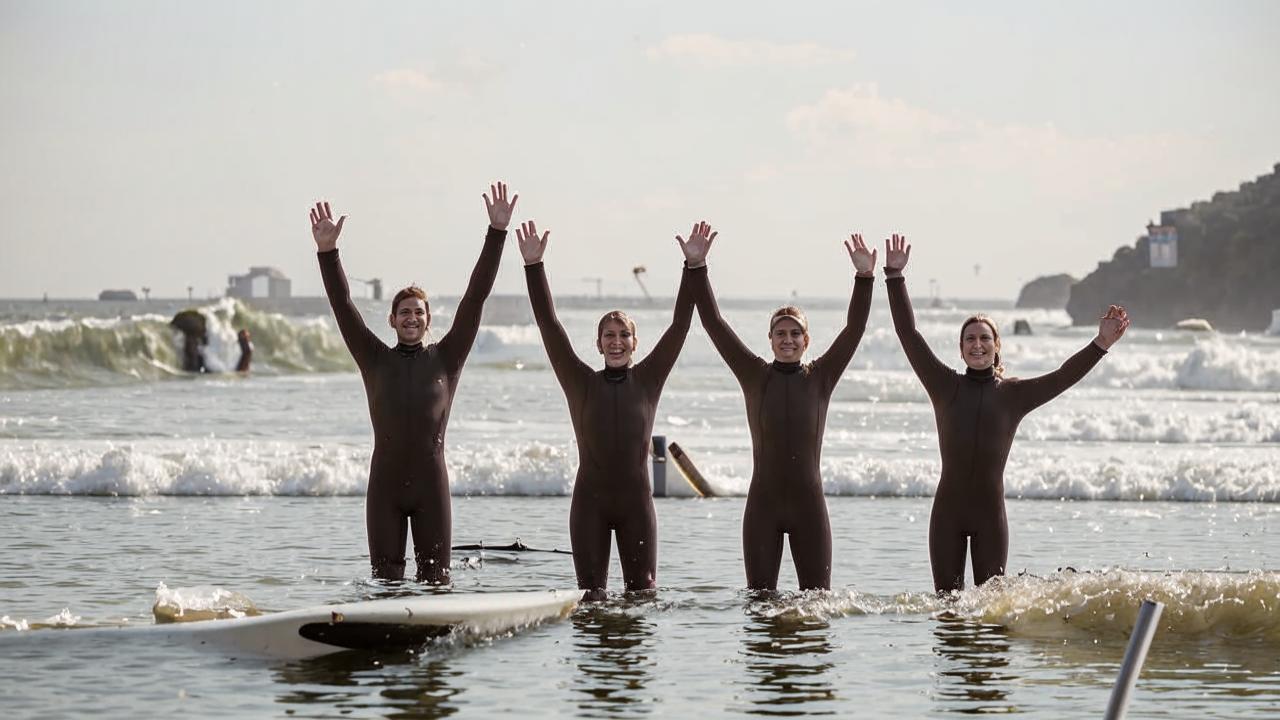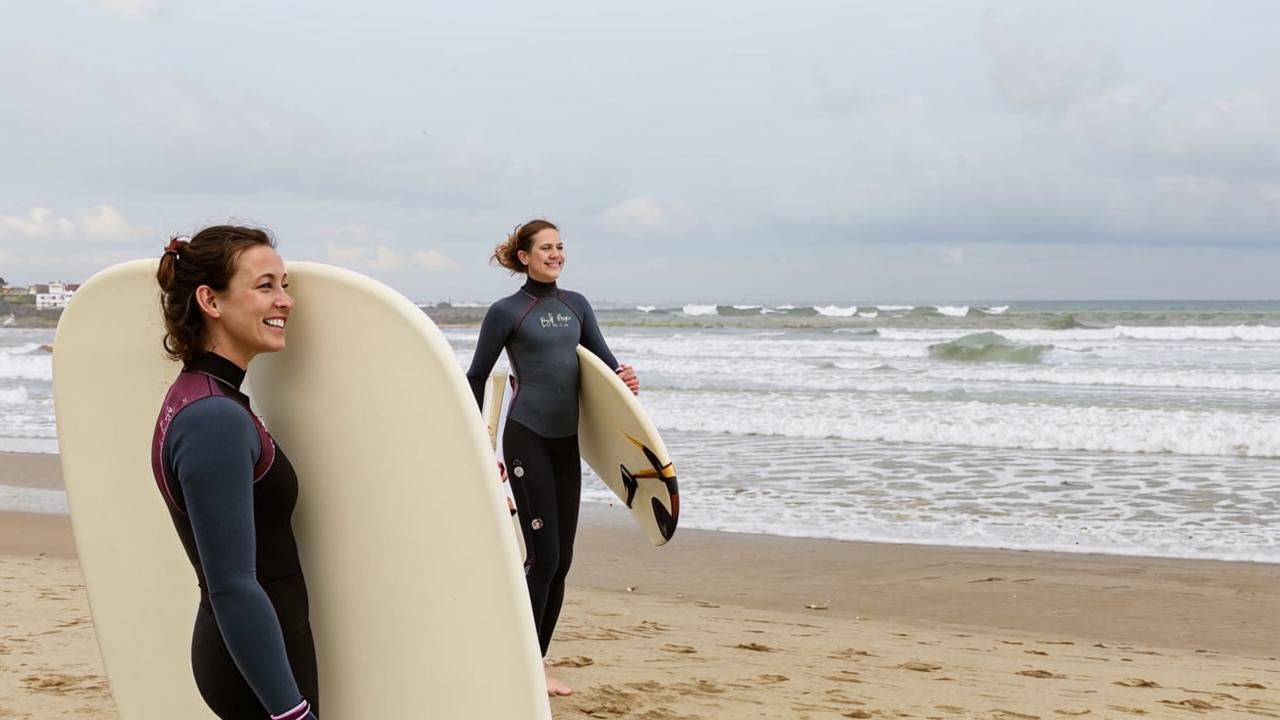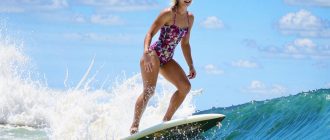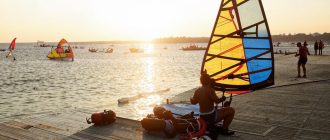For some, surfing is the ultimate expression of romance: athletes stay by the ocean, meet dolphins on the line-up, spend evenings on the beach to the sounds of ukulele and campfire. For others, it’s a real job: high-performance sports with regular hours of training, injuries, tracking weather forecasts and preparing for the Olympics.
Of course, these ways of life vary greatly, but they have one thing in common: riding the water on a board. Today we tell you what to do, in what direction to think, and most importantly – where to start surfing if the ocean beckons you unbearably.

Where to start
“Now I will fly to Bali, take an instructor and go” – most likely, you are of this opinion. It is correct, but there is always a “but”. It is best to come to the sport “slightly” prepared. And in water sports it is absolutely necessary. Here’s where to start.
Read everything you can find about surfing
What it is, how, why and why. What are the boards, what is a “lich” and “washing machine”. You’ll systematize and organize everything during your lessons, but first you need to learn as much information as you can.
Buy a pool membership
You’ll be spending 90% of your time in the water, which means you need to feel as comfortable as possible. To do this, first set yourself a crawl swimming technique. When you can swim 500 meters in 20 minutes, you can go to the next step.
Sign up for a freediving class
At this stage you need to realize that water is your friend, you should not be afraid of it. Fear in an emergency situation will lead to panic, which can have serious consequences. Freediving will help you adapt to being underwater, learn to hold your breath for a long time and control your emotions. When you learn to dive 50 meters calmly, do not stop there – continue to improve the skill.
Enroll in a “pre-surf” training course
As surfing culture has been developing strongly in recent years, new training schools have started to open in different cities. For example, in Moscow, there are “pre-surf” training courses that will immerse you in surfing, but without the ocean.
The courses themselves will not replace riding a board, but will save time. Instructors will teach you how to paddle correctly, stand up on the board, and also tell you the basics of freediving and skateboarding. But that doesn’t mean you can skip the previous step.
Learn to conserve your resources
Surfing takes a lot of time. If you practice without a coach, the first successes will appear in six months. If you work in an office, your time is obviously worth more than surfing training. At this stage, you should get acquainted with a person who has long been confidently catching waves, and can also explain to you clearly all the nuances of riding.
Try to master skateboarding or wakesurfing and go for a stretching session
Any sport involving boards – snowboarding, skateboarding, surfing, wakesurfing or wakeboarding – has overlaps.
Read about where to start learning about wakesurfing in a previous article at this link.
Knowing how to ride one of the boards makes it easier to learn the “related” sports, as the principles and movements have a lot in common. And stretching will help you be smoother and more flexible, which will help you feel better on the board.
Buy a ticket to a surfcamp
By now, you’ll have a good base of knowledge and skills that you need to start riding. You can safely head to the big water and try to put everything into practice.
What rules to follow on the water
Once on the beach, don’t immediately throw off your clothes and run towards the water. First, you will need to warm up, as in any sport. Secondly, surfing has its own rules, which you should also keep in mind.

Professional surfer and project manager of Agape Surf and Athletes Club athlete
There are many rules in surfing, the most important of which are the rules of surf etiquette and safety on the water. To list all of them would require a separate article, and here I will only talk about the main ones. But it is better to find a complete list and thoroughly study everything.
- Do not ride in an unfamiliar place without asking about its dangers from local surfers or fishermen.
- If you come to a new spot and see a crowd of athletes, it doesn’t mean that it’s the perfect place for you. Evaluate your level, the level of the guys surfing there and choose the spot that’s right for you.
- Before entering the water, be patient and wait for a big set (a series of waves). It can be more than twice the size of normal waves. Look at the water for at least 20 minutes and analyze the conditions.
- Do not ride alone. If something happens to you, there will be no one to help you.
- If, when you swim out to a line-up, you see a surfer who is already riding a wave, swim toward the collapsed foam. The rule in English is called eat shit. Crude, but true. That way you won’t interfere with the athlete and you won’t ruin the wave he’s been waiting for. If the surfer is still on the board, raking, you should continue to swim towards the shoulder of the wave.
- When on a line-up, don’t turn your back to the ocean – you may get hit by a big set. Be careful to keep your eyes on the waves. Sit on the board half-turned to the shore.
- Try never to dive head down. This is the most dangerous way to end a wave or fall.
- Falling off the board is best done backwards or sideways, trying to throw it away from you.
- All surfers have the same rights on the water and must follow the same rules.
- If the state or local community prohibits riding certain types of boards on a particular beach, you must abide by those restrictions.
- There is no need to get on someone else’s wave. If a person catches it off the crest, you should not stand on that wave while farther away from its crash zone. You should look at the crest before you stand up, and if someone is already riding the wave, skip it.
How to master the technique – on your own or with a coach
We did not tell you about the nuances and subtleties of the technique, how to stand up on the board in the water and how to make a pass. Because you will be taught by a coach. Let’s repeat once again: “without an instructor” – this is a wrong and illiterate approach to riding.

It is worth saying that surfing in Russia is probably one of the most sensible and correct in terms of training. During the domestic “boom” people came to this sport mature and not frivolous. Life experience was combined with skating, and a good and competent quintessence turned out. A huge plus is that the training is in the native language, hence the material is better and more correctly assimilated.






